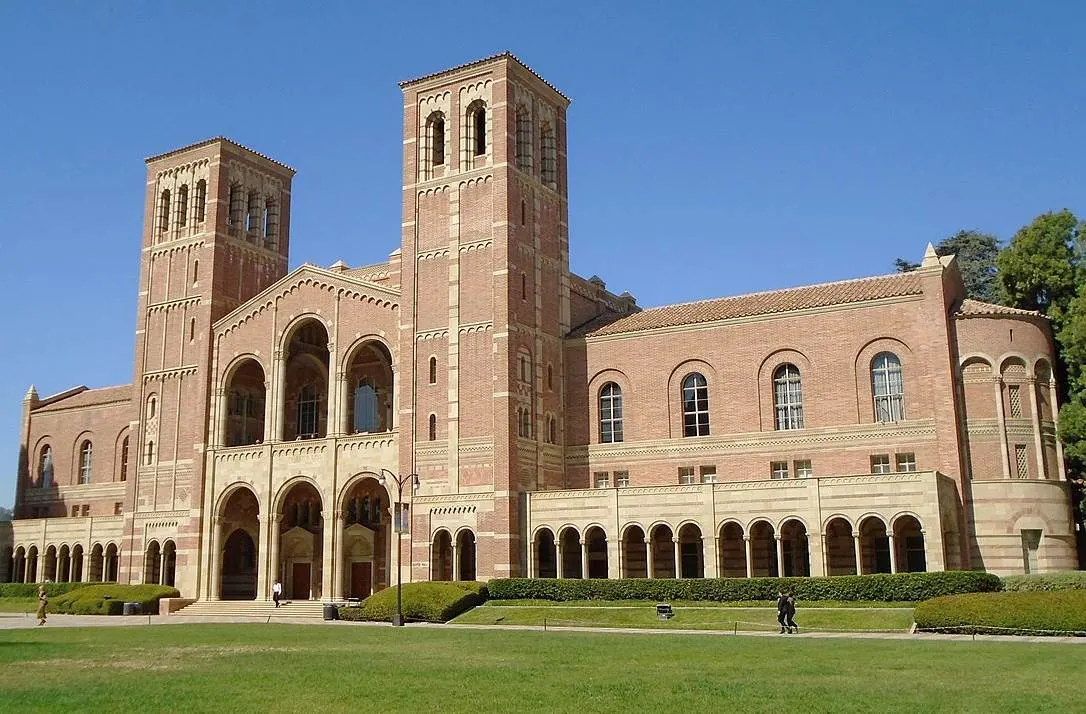The 19th century was marked by a strong desire to bring back the memories of what the Romantics believed to be a better past.
It was often a reaction against the Industrial revolution and fast urbanization in major cities, but sometimes just a feeling of nostalgia as well. The same applies to another 19th-century revival style known as Gothic Revival architecture.
Romanesque Revival architecture emerged in the 1840s. In Germany, some buildings were constructed in the “Rundbogenstil” or “Round-arched style” as early as the 1830s.
Round arches and solid buildings are common characteristics of Romanesque architecture, a style that followed Byzantine architecture in the 11th and 12th centuries in Europe.
The style also spread to North America as American architect Henri Hobson Richardson (1838-1886) singlehandedly created the spinoff known today as Richardsonian Romanesque architecture.
In this article, you’ll discover some of the most notable examples of Romanesque Revival Buildings from all around the world.
1. Smithsonian Castle – Washington D.C., United States
The Smithsonian Castle is the common name of the Smithsonian Institution Building, the structure that serves as the administrative offices and information center of the Smithsonian Institution. It’s one of the most distinctive buildings in Washington D.C. and is located near the National Mall.
The building was constructed between 1849 and 1855 which makes it one of the earliest examples of Romanesque architecture in the United States. Although the robust tower and rounded arches and windows are typical Romanesque features, some parts also feature Gothic Revival elements.
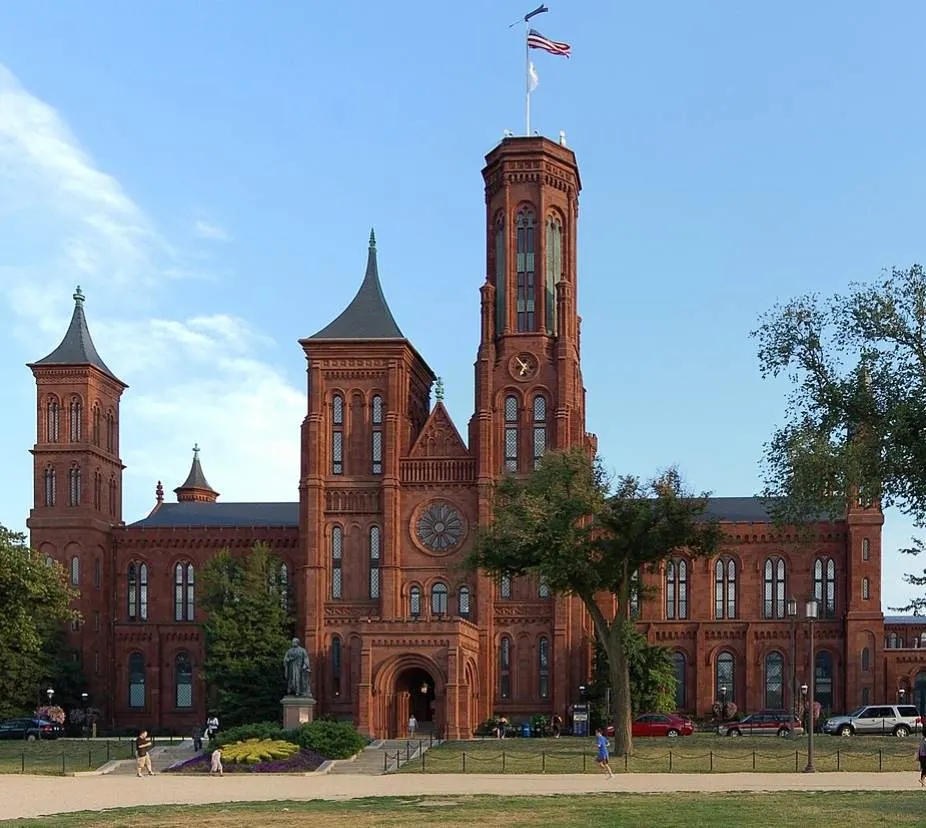
2. Fisherman’s Bastion – Budapest, Hungary
Fisherman’s Bastion is the name of one of the most famous landmarks in Budapest, the capital city of Hungary in Central Europe. The structure is located near Buda Castle and is defined by several Romanesque-style observation platforms that provide stunning views of the city.

This immense structure is 140 meters (459 feet) long and runs parallel to the Danube River. It was constructed between 1844 and 1851 although several protective walls of the castle were already constructed during the 1700s and were incorporated into this popular tourist attraction.
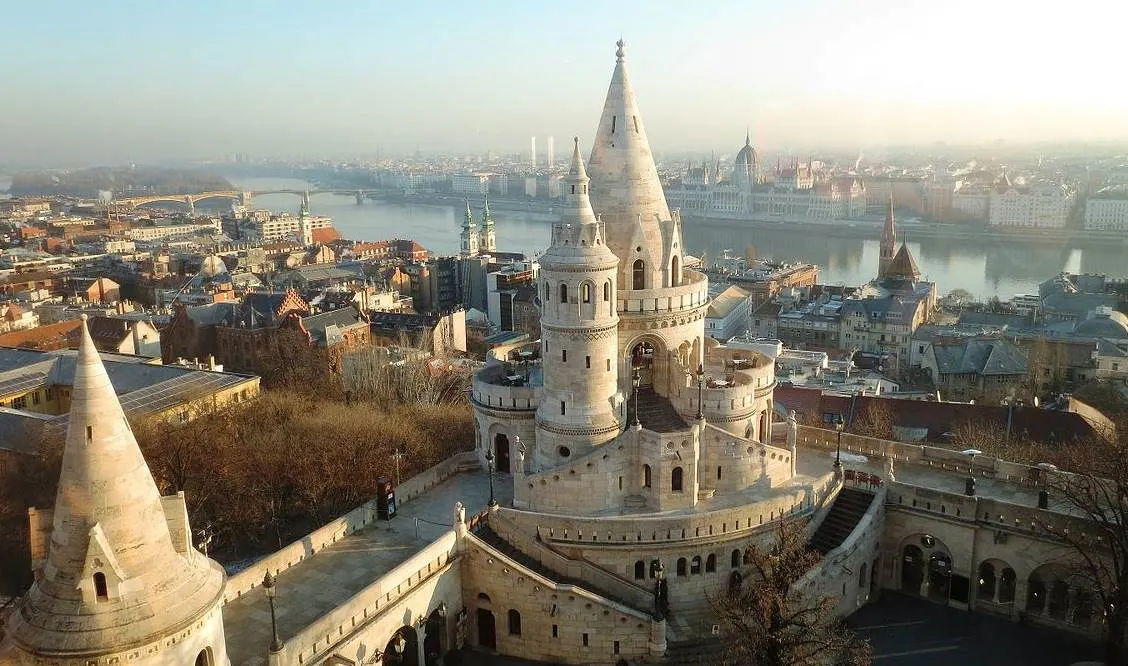
3. Cathedral Basilica of Saint Louis – St. Louis, United States
The Cathedral Basilica of Saint Louis is a large and famous church located in the Central West End of St. Louis, Missouri. The building in St. Louis was constructed between 1907 and 1914 and incorporates both Byzantine Revival and Romanesque Revival architectural features.
The cathedral was dedicated as a basilica by Pope John Paul II in 1997 and features a spectacular collection of Byzantine-style mosaics inside. The work on this large work of art started in 1912 but wasn’t completed until 1988. It took a while because it features 41.5 million glass tiles in over 7,000 different colors.

4. Queen Victoria Building – Sydney, Australia
The Queen Victoria Building is one of the most remarkable buildings in Sydney, the most populous city in Australia. Situated within the city’s central business district, this incredible Romanesque Revival landmark was constructed between 1893 and 1898.
The building occupies multiple city blocks as it’s 190 meters (620 feet) long and 30 meters (98 feet) wide. It was originally conceived to be a marketplace and served this purpose for many decades. It slowly started to become dilapidated but has been completely restored to its former glory.
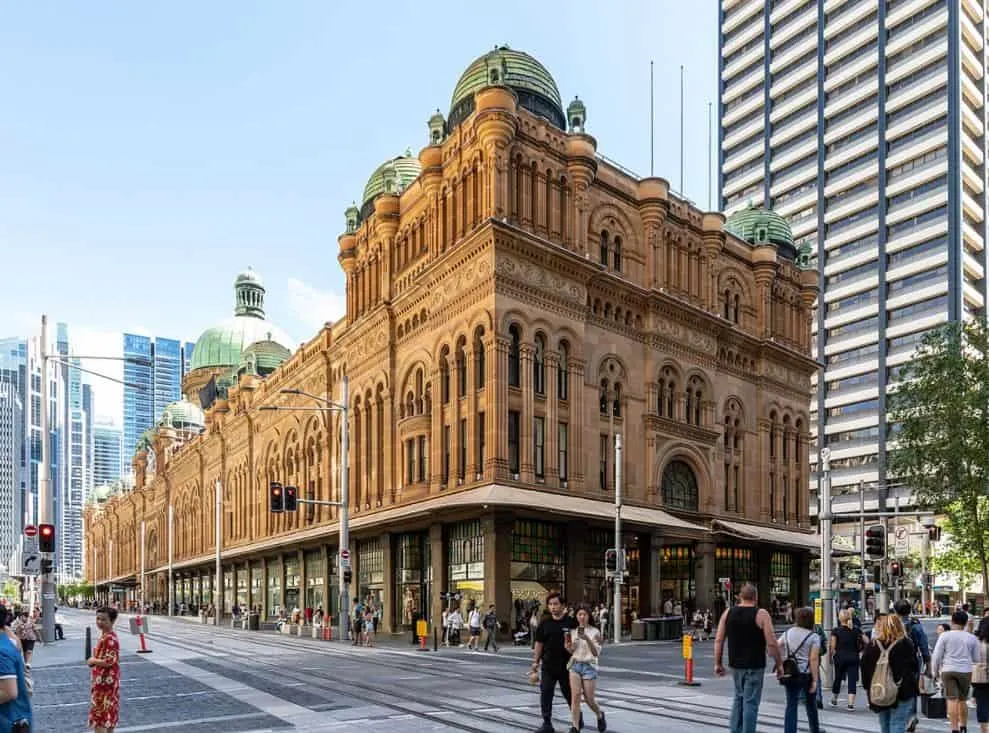
5. Old City Hall – Toronto, Canada
The Old City Hall of Toronto is the former home of the Toronto City Council, a purpose it served between 1899 and 1966. It’s one of the most prominent examples of the Richardsonian Romanesque architectural style, although it was constructed between 1889 and 1899 (Richardson died in 1886).
This shows the level of influence the newly revived style had in North America because many other architects used it to design buildings in the late 19th century. This building in Toronto was one of the largest in the city upon completion and features a clock tower that stands 103.64 meters (340 feet) tall.
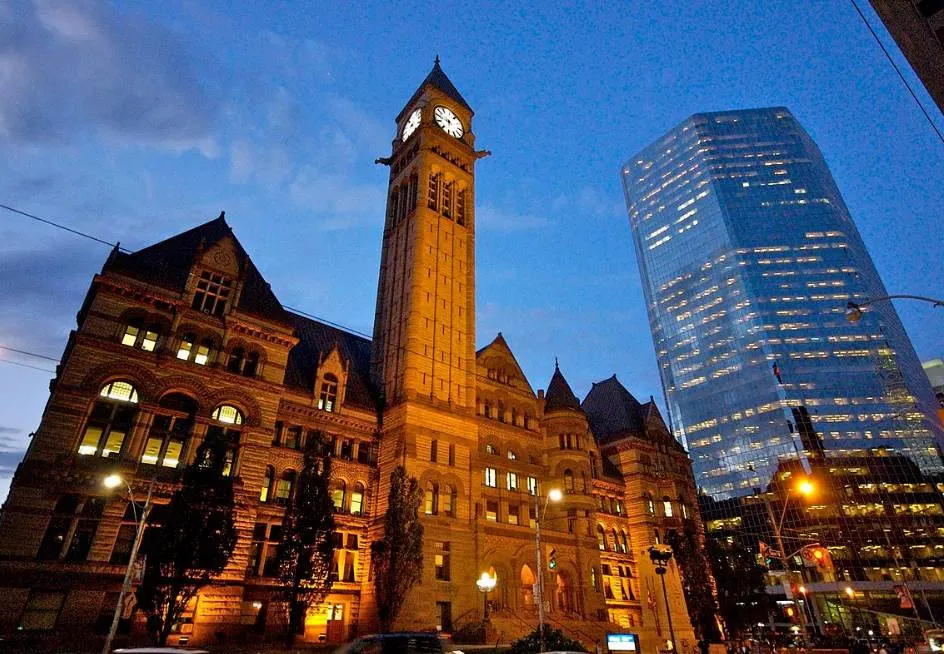
6. Speyer Cathedral (West Façade) – Speyer, Germany
Speyer Cathedral is considered to be one of the most famous examples of Romanesque architecture in Europe. The construction of this monumental church was started in 1030 and it was consecrated just over 3 decades later in 1061. The core of the building was nearly completed back then, nearly 1,000 years ago.
Not all parts of the amazing church date back to the 11th century, though. The western façade is an addition that was added in the 19th century between 1854 and 1858. This addition turns Speyer Cathedral into one of the largest buildings that both features Romanesque and Romanesque Revival elements.
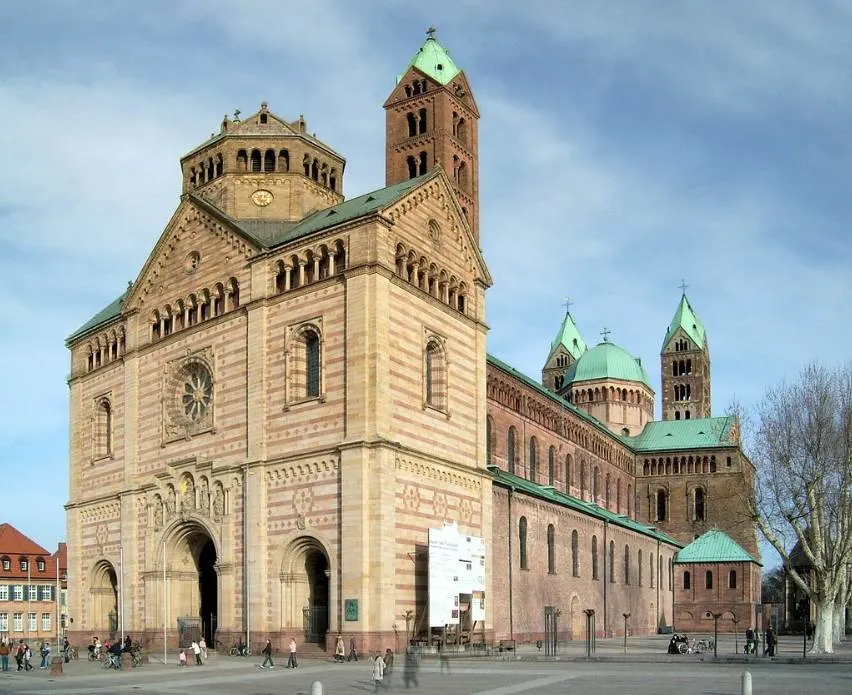
7. Pioneer Building – Seattle, United States
The Pioneer Building in Seattle is another great example of the magnificent Richardsonian Romanesque architectural style. It’s one of the most stunning landmarks in the Seattle’s Pioneer Square District and was constructed between 1889 and 1892.
It’s one of the oldest buildings in the central business of the city because it was constructed shortly after the Great Seattle Fire of 1889, a calamity that destroyed just about every building in it. Although most parts of the building are Romanesque, it also features some Victorian-style designs.
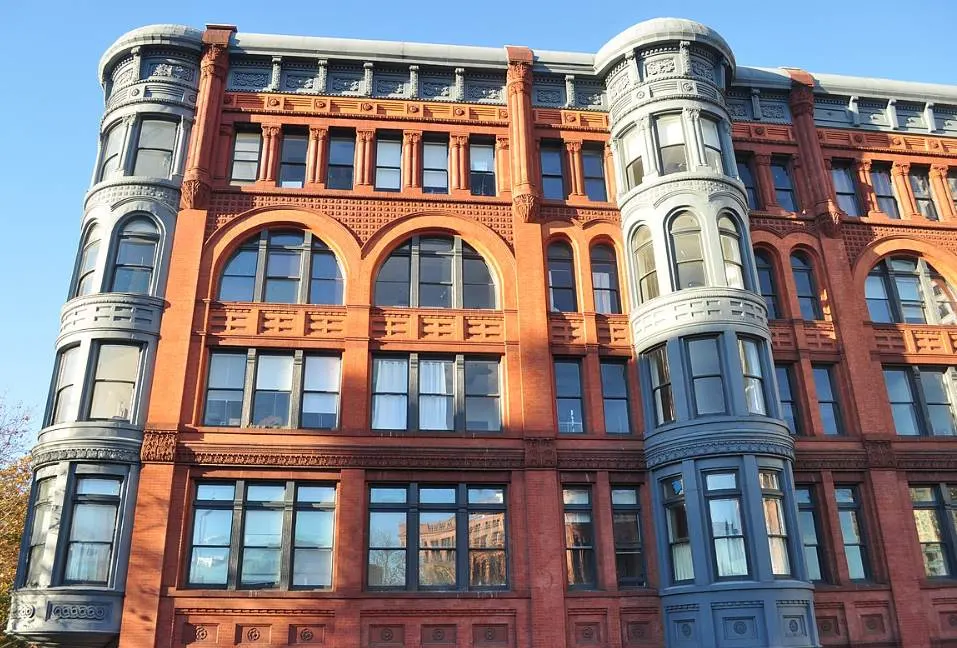
8. Ouagadougou Cathedral – Ouagadougou, Burkina Faso
Ouagadougou Cathedral is a prime example of the fact that Romanesque Revival architecture spread all around the world. It’s officially known as the “Cathedral of the Immaculate Conception of Ouagadougou” and is located in the capital city of Burkina Faso, a country in West Africa.
The building was constructed in the 1930s, long after the style had seized to be used in many other parts of the world. It was made possible by a French apostolic vicar named Joanny Thévenoud. This was a time when this part of the continent was part of French North Africa.
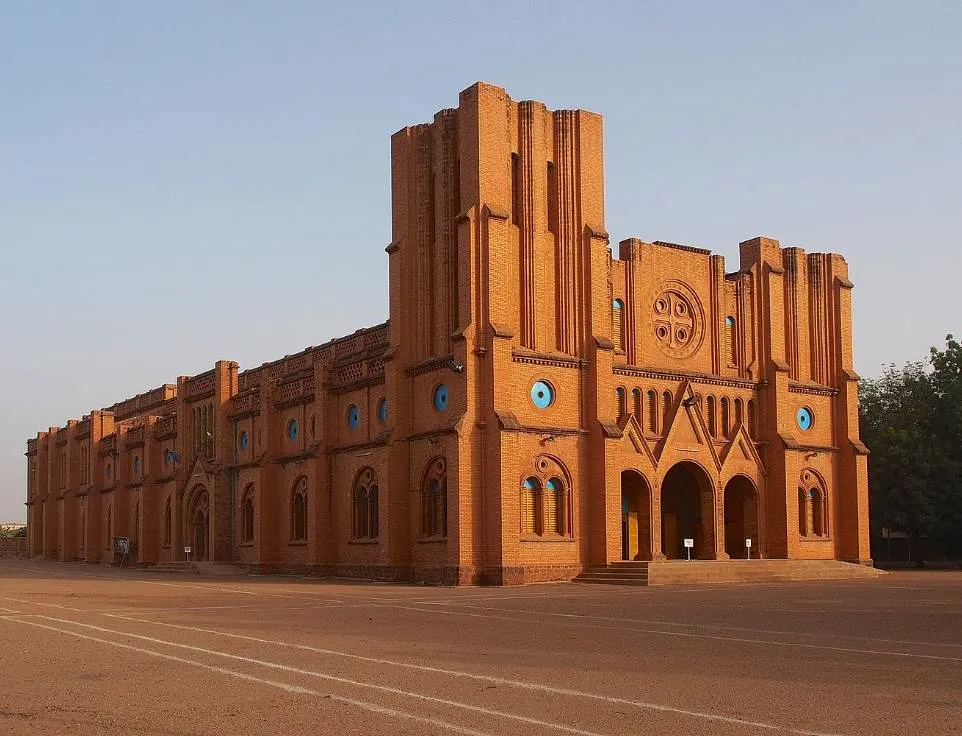
9. River Place – Detroit, United States
River Place is the name of a historic building complex in Detroit, Michigan. The buildings in Detroit were initially constructed in 1891 and were originally known as the Parke-Davis and Company Pharmaceutical Plant. It was continuously expanded until the year 1955.
The buildings constructed at the turn of the century feature red bricks and a Romanesque Revival style, while those constructed after 1920 were made of reinforced concrete. The complex is now used for offices, retail space, residences, and a hotel. It was added to the National Register of Historic Places in 1985.
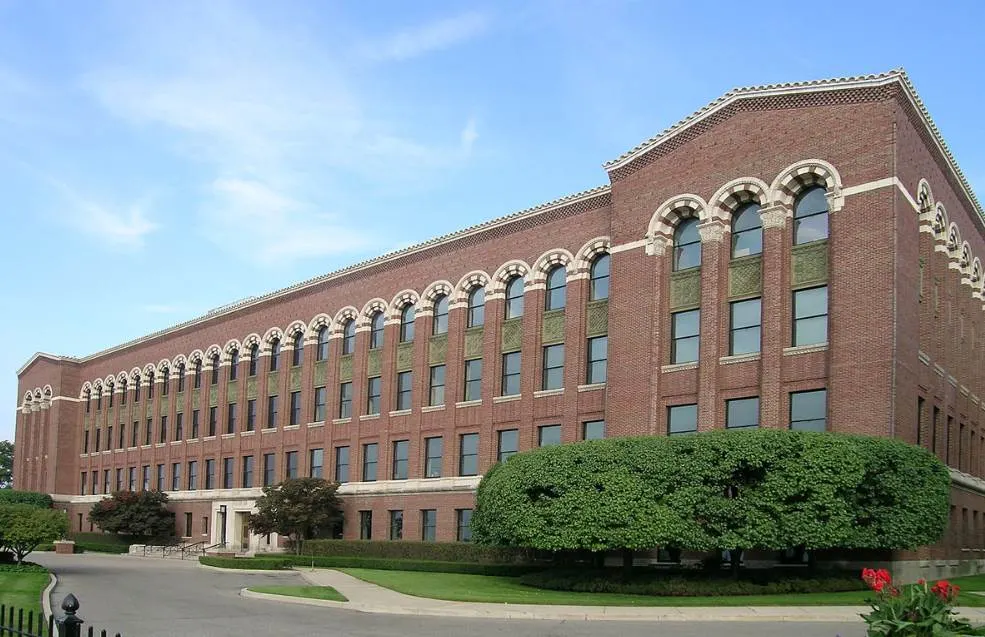
10. Royce Hall – Los Angeles, United States
Royce Hall is a famous building in Los Angeles, California, and is located on the campus of the University of California (UCLA). It’s one of the 4 original buildings that were constructed on the university’s Westwood campus and was completed in 1929. Back then, it served as the main classroom building on the campus.
The building was seriously damaged in the 1994 Northridge earthquake and received a $70.5 million renovation that made it earthquake-proof. Today, the main function of Royce Hall is to feature as the main performing arts center and concert hall on the campus. The beautiful auditorium can seat 1,800 people.
